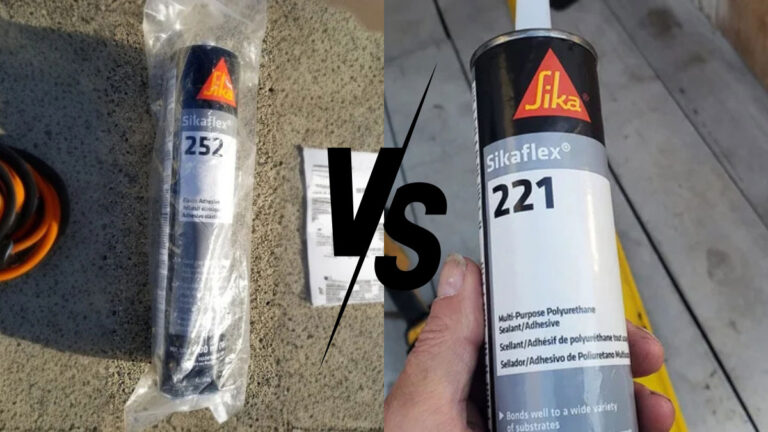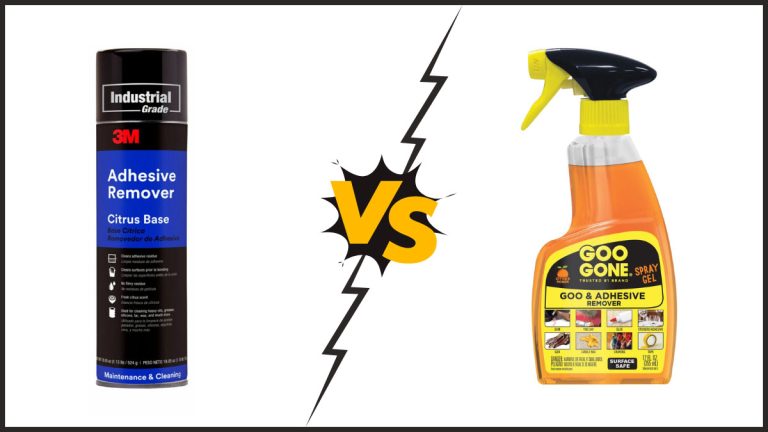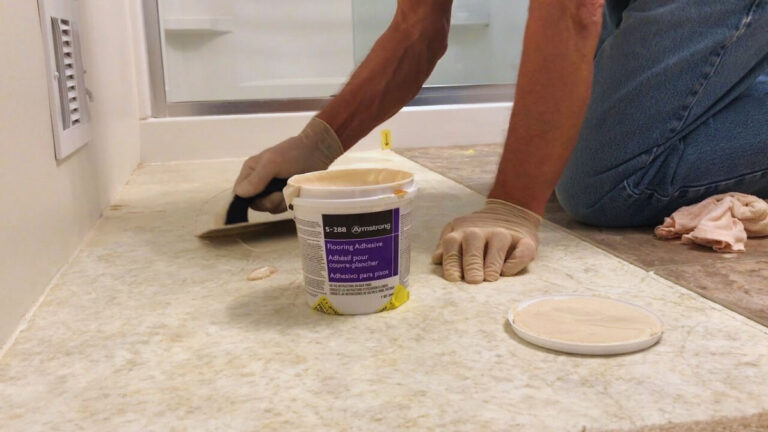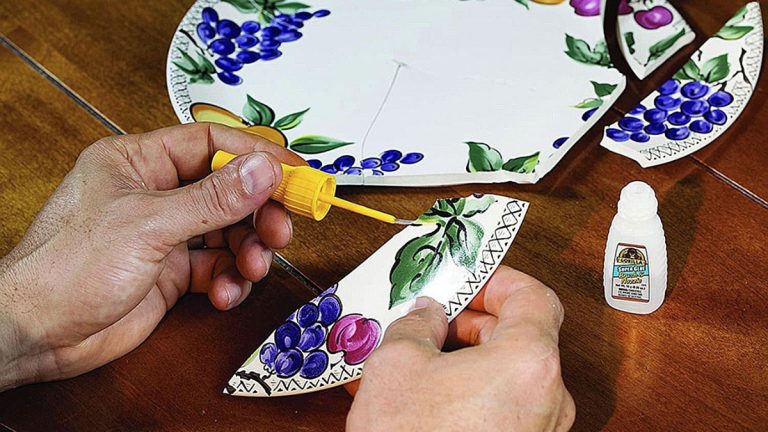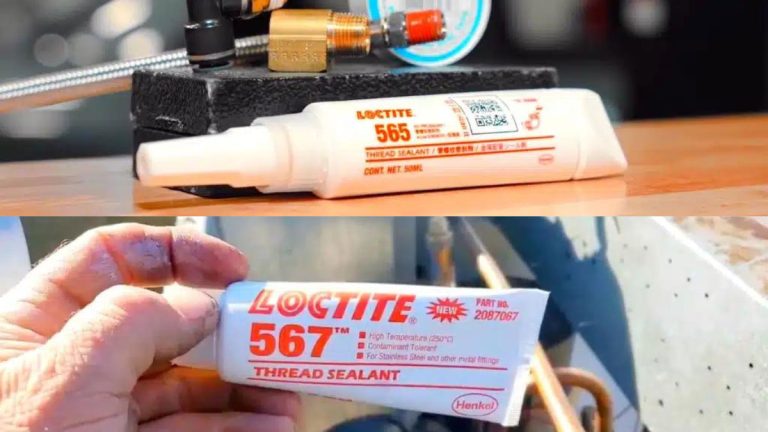DAP vs GE Silicone: Which Sealant is Best for Your Project?
Choosing the right sealant for your projects can make all the difference in durability and finish. When it comes to DAP vs. GE Silicone, both brands offer unique advantages that cater to different needs. Whether you’re sealing a bathroom, kitchen, or outdoor space, understanding the strengths of each product will help you make an well-informed choice.
DAP is known for its versatility and ease of use, making it a popular choice for DIY enthusiasts. On the other hand, GE Silicone boasts superior flexibility and longevity, often preferred by professionals for more demanding applications. Jump into this comparison to discover which sealant aligns best with your specific requirements.
Key Takeaways
- Understand the Use Cases: DAP silicone is versatile and user-friendly, ideal for DIY projects and static installations. GE silicone offers superior flexibility and durability, suitable for professional use in dynamic and high-moisture areas.
- Comparison of Features: DAP silicone is easier to apply and generally cheaper, but it has a slower curing time and stronger odor. GE silicone cures faster and comes in a wider range of colors but is more challenging to apply and priced higher.
- Performance Aspects: GE silicone excels in durability and flexibility, while DAP shows minimal shrinkage and is cost-effective. Both have specific advantages depending on the project requirements.
- Cure Time Considerations: For projects requiring quick completion, GE silicone’s faster curing time is beneficial. For non-time-sensitive projects, DAP silicone’s slower cure rate may be acceptable.
- User Preferences: DIY enthusiasts prefer DAP for its ease of application and minimal shrinkage. Professionals favor GE for its quick curing time and long-term reliability.
- Specific Project Applications: Choose DAP for affordability and static applications with minimal movement. Opt for GE silicone in dynamic outdoor conditions or where high flexibility and rapid curing are required.
Overview of DAP and GE Silicone
DAP Silicone
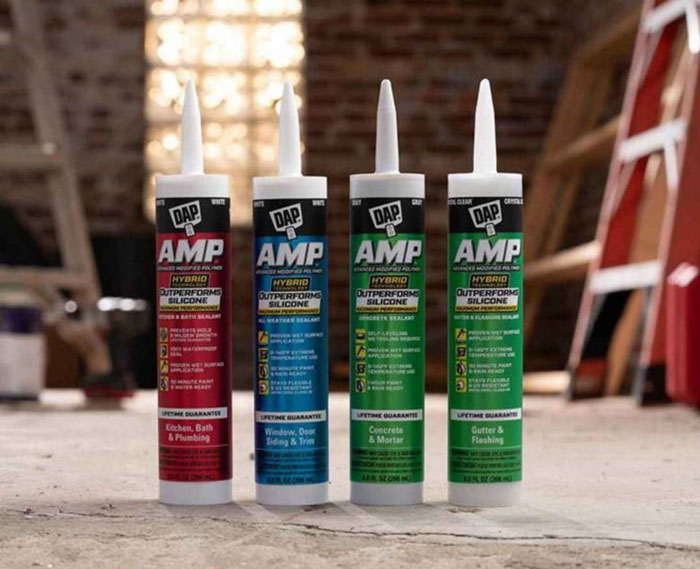
Type and Characteristics:
- DAP Silicone Caulk: Often 100% silicone or siliconized acrylic, DAP silicone is known for its versatility.
-
Advantages:
- Ease of Use: Simple to apply and spread, making it user-friendly.
- Minimal Shrinkage: Less need for reapplication compared to GE silicone.
- Cost-Effective: Generally priced lower than GE silicone.
-
Disadvantages:
- Cure Time: Slower curing, which can delay project completion.
- Odor: Stronger smell than GE silicone, which can be off-putting.
- Color: Available in lighter shades that may not match all aesthetic needs.
Specific Products:
- DAP Kwik Seal Ultra:
- Attributes: Siliconized acrylic caulk that is waterproof and stain-proof.
- Drying Time: Cures quickly, between 4 to 24 hours.
- Features: Low-odor and low-VOC, but not paintable.
GE Silicone
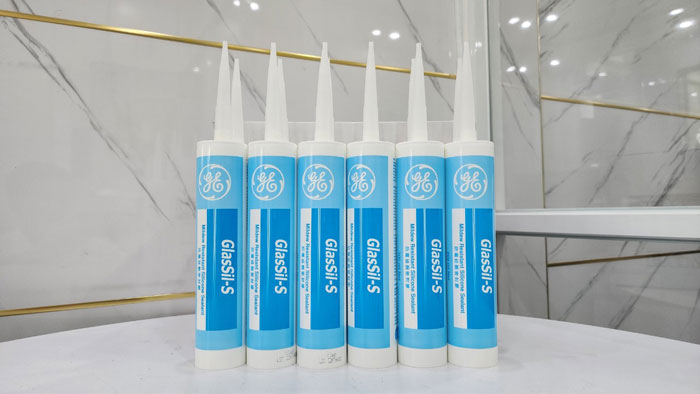
Type and Characteristics:
- GE Silicone Caulk: Commonly 100% silicone, GE silicone is noted for its durability and flexibility.
-
Advantages:
- Durability: Highly flexible and resistant to cracking, ideal for long-term projects.
- Color Range: Available in a variety of colors to match specific needs.
- Odor: Less offensive smell compared to DAP silicone.
-
Disadvantages:
- Application: More difficult to spread evenly, requiring more effort.
- Cost: Generally higher price point than DAP silicone.
- Shrinkage: Slightly more shrinkage than DAP silicone, potentially requiring touch-ups.
Specific Products:
- GE Supreme Silicone:
- Attributes: Offers a lifetime guarantee, indicating high durability.
- Drying Time: Cures within 30 minutes to 6 hours, suitable for quick projects.
- Features: Mold-free and mildew-resistant, ideal for high-moisture areas.
| Feature | DAP Silicone | GE Silicone |
|---|---|---|
| Type | 100% Silicone or Siliconized Acrylic | 100% Silicone |
| Ease of Use | Easier to apply and spread | More difficult to spread |
| Cure Time | 4 to 24 hours | 30 minutes to 6 hours |
| Odor | Stronger smell | Less offensive smell |
| Cost | Generally cheaper | Generally more expensive |
| Durability | Moderate | High |
| Shrinkage | Less | Slightly more |
| Color Options | Lighter colors | Wide range of colors |
| Specific Product Examples | DAP Kwik Seal Ultra | GE Supreme Silicone |
Understanding the distinct features of DAP and GE silicone can help you select the best sealant for your projects. If you favor ease of use and affordability, DAP silicone might be your best option. If durability and color variety are more critical, GE silicone could be the superior choice.
Key Differences Between DAP and GE Silicone
Choosing the right sealant is crucial. Understanding the main differences between DAP and GE Silicone will help you make an well-informed choice.
Composition and Material Properties
- Flexibility and Cure Time:
- GE Silicone 2: Demonstrates superior flexibility. With 40% more flexibility and 5X more strength than Class 25 sealants, it cures faster, making it suitable for dynamic areas.
- DAP 100% Silicone Rubber Sealant: Offers less flexibility and takes longer to cure. It serves better in applications where movement is minimal.
- Shrinkage:
- DAP: Exhibits minimal shrinkage. It’s known for maintaining its form, reducing the need for touch-ups.
- GE: Experiences noticeable shrinkage. Users often report small cracks that require filling within days.
- Odor and Cleanup:
- DAP: Releases a strong odor. Cleanup involves mineral spirits.
- GE: Has a distinct smell due to acetic acid (GE Silicone I) or ammonia (GE Silicone II). Even though the odor, it’s generally reliable.
- Cost:
- DAP: More budget-friendly. It’s a cost-effective option for large projects where price sensitivity is crucial.
- GE: Higher-priced. The additional cost reflects its enhanced features like flexibility and quick curing.
Material Properties Table
| Feature | GE Silicone 2 | DAP 100% Silicone Rubber Sealant |
|---|---|---|
| Flexibility | 40% more flexible | Less flexible |
| Cure Time | Fast | Slower |
| Shrinkage | Higher, requires touch-ups | Lower, maintains form |
| Odor | Acetic acid or ammonia | Strong |
| Cleanup | Easier | Requires mineral spirits |
| Cost | Higher-priced | More affordable |
Application Areas
Both DAP and GE Silicone have specific application strengths.
- Bathroom and Kitchen Sealing:
- GE Silicone 2: Ideal for high-moisture areas. It resists mold and mildew, making it perfect for showers, tubs, and sinks.
- DAP 100% Silicone Rubber Sealant: Effective in water exposure. It’s commonly used around sinks and countertops.
- Outdoor Projects:
- GE Silicone 2: Suited for exterior projects. Its flexibility and strength protect against weather extremes.
- DAP: Suitable for less dynamic outdoor applications. It’s effective for static fixtures like sidings and windows.
- Window and Door Frames:
- GE Silicone 2: Excellent for frames needing durable, flexible sealant. It withstands expansion and contraction.
- DAP: Versatile for various window and door types. Its lower shrinkage ensures consistent sealing.
Summary Actions
Choose GE Silicone 2 for projects demanding high flexibility, quick curing, and durability. Opt for DAP 100% Silicone Rubber Sealant when cost-effectiveness, minimal shrinkage, and static applications are priorities. Select the right sealant based on your specific needs to ensure optimal results.
Understanding these differences ensures you select the appropriate silicone, enhancing the longevity and effectiveness of your projects.
Performance Comparison
When assessing sealants, understanding performance aspects like durability, dry time, flexibility, and adhesion strength is crucial. Here’s how DAP 100% Silicone Rubber Sealant and GE Silicone 2 stack up in these areas.
Durability
- DAP 100% Silicone Rubber Sealant: This sealant offers robust durability if applied correctly, maintaining its flexibility and integrity for years. But, it might expand or crack in extremely cold conditions.
- GE Silicone 2: Known for its exceptional reliability and long-lasting performance, GE Silicone 2 withstands various environmental stresses, making it a top choice for durability.
Dry Time
- DAP 100% Silicone Rubber Sealant: The drying process for DAP is relatively slow, often taking 24 hours for a thorough cure. This longer dry time can be a drawback if you’re working on a time-sensitive project.
- GE Silicone 2: GE Silicone 2 features a faster curing time, typically becoming tack-free within 30 minutes and achieving full cure in 24 hours. This quick dry time is advantageous for projects needing rapid completion.
Flexibility
- DAP 100% Silicone Rubber Sealant: While DAP offers decent flexibility, it’s best suited for static applications with minimal movement. It retains its form and flexibility well in controlled environments.
- GE Silicone 2: GE Silicone 2 excels in flexibility, making it ideal for dynamic areas subject to constant movement. It’s perfect for applications requiring sealing that adapts to shifting surfaces.
- DAP 100% Silicone Rubber Sealant: DAP provides strong adhesion to a variety of surfaces, though its effectiveness can vary depending on the substrate and environmental conditions.
- GE Silicone 2: Known for superior adhesion strength, GE Silicone 2 bonds exceptionally well to a range of materials, ensuring a reliable seal in diverse conditions.
Overall, choosing between DAP and GE Silicone 2 depends on your specific project needs: whether you prioritize durability, dry time, flexibility, or adhesion strength. Understanding these performance aspects aids in selecting the optimal sealant for your application.
User Experiences and Reviews
Evaluations from users of DAP and GE silicone caulks offer valuable insights into their functionality and performance.
Ease of Application and Spread
DAP:
- Users report that DAP silicone caulks are easier to expel from the tube
- Spreading DAP caulk is straightforward, facilitating a smoother application process
- Some users found that the slower cure time might be an inconvenience
GE:
- GE Silicone II can be more challenging to spread evenly
- Faster cure time attracts users who prioritize speed in their projects
- GE Silicone I has a longer cure time, taking between 24 to 48 hours
Cure Time
DAP:
- Takes longer, usually remaining tacky for several days post-application
- Suitable for projects where immediate use is not necessary
GE:
- Silicone II sets faster, a beneficial feature for time-sensitive jobs
- Silicone I needs 24 to 48 hours for a full cure, which is relatively quick
Shrinkage
DAP:
- Users observe minimal shrinkage, reducing the need for reapplication
- Provides a more consistent finish over time
GE:
- More prone to shrinkage, which can lead to cracks and subsequent filling
- May require additional maintenance to maintain the seal
Color and Appearance
DAP:
- Commonly offers a lighter color palette
- Blends easily with lighter surfaces, enhancing aesthetic appeal
GE:
- Available in a broader range of colors
- Valuable for users needing flexibility in color matching
User Experiences
Positive Feedback:
- DAP: Ease of use and minimal shrinkage resonate well with DIY enthusiasts
- GE: Faster curing times and durability appeal to professionals with demanding schedules
Negative Feedback:
- DAP: Slower cure times can be a drawback for urgent projects
- GE: Higher shrinkage rates require potential touch-ups, which some users find inconvenient
| Feature | DAP Silicone | GE Silicone |
|---|---|---|
| Ease of Application | Easier to expel and spread | Harder to spread evenly |
| Cure Time | Slower, remains tacky for days | Faster, 24-48 hours for full cure |
| Shrinkage | Minimal shrinkage | More prone to shrinkage |
| Color Options | Lighter colors | Wider color range |
Figures clearly show that each brand excels in specific areas. Your choice depends on the project’s requirements – DAP for ease and consistency, or GE for speed and versatility.
Choosing the Right Silicone for Your Project
Selecting the appropriate silicone for your project ensures optimal performance and durability. Understanding the differences between DAP and GE silicone types is essential for making an well-informed choice.
Factors to Consider
Type of Silicone
- DAP: Available as siliconized acrylic or pure silicone. For example, DAP Kwik Seal Ultra is a siliconized acrylic, while DAP Silicone K&B is a pure silicone.
- GE: Comes in acid-cure (GE Silicone I) and ammonia-cure (GE Silicone II) types. GE Silicone I uses acetic acid for curing, giving a vinegar smell, while GE Silicone II uses ammonia.
Cure Time
- DAP: Generally slower. For instance, DAP Kwik Seal Ultra dries within 4 to 24 hours. Pure silicone variants often take longer.
- GE: Varies significantly. GE Silicone I needs 24 to 48 hours to cure, while GE Silicone II can take 7 days or more.
Ease of Application
- DAP: Easier to expel and spread, though it may have a slower cure time and stronger odor.
- GE: Faster curing options but can be more challenging to apply evenly.
Application Techniques
Proper application techniques ensure the silicone performs as expected.
Preparing the Surface
- Clean thoroughly to remove dirt, grease, and old sealant. Use isopropyl alcohol for a residue-free finish.
- Let the surface dry completely before applying silicone.
Applying the Silicone
- Cut the nozzle at a 45-degree angle for precise application.
- For DAP: Squeeze the tube consistently while moving it steadily along the seam.
- For GE: Use consistent pressure and speed, ensuring uniform application, particularly for GE Silicone II, which is thicker.
Curing and Drying
- DAP products generally dry slower, requiring up to 24 hours or more.
- GE Silicone I cures in 24 to 48 hours, while GE Silicone II requires 7 days for full cure.
- Avoid displacing the silicone while it’s curing.
- Check the seal after curing to ensure no gaps or bubbles formed.
| Silicone Type | Cure Time | Application Ease | Odor |
|---|---|---|---|
| DAP Kwik Seal Ultra | 4 to 24 hours | Easy | Strong |
| DAP Silicone K&B | Longer than 24 hours | Moderate | Moderate |
| GE Silicone I | 24 to 48 hours | Moderate | Strong (vinegar smell) |
| GE Silicone II | 7 days or more | Challenging | Moderate (ammonia) |
Making an informed choice between DAP and GE silicone ensures effective sealing tailored to the specific needs of your project. Understand their properties to achieve the best results based on your project’s requirements.
Conclusion
Choosing between DAP and GE Silicone depends on your project needs. If you’re looking for a user-friendly, cost-effective option with minimal shrinkage, DAP 100% Silicone Rubber Sealant is ideal. It’s perfect for static applications and offers a consistent finish.
On the other hand, if your project demands high flexibility, quick curing, and superior durability, GE Silicone 2 is the way to go. It’s excellent for dynamic environments and high-moisture areas, even though being more challenging to apply and pricier.
Understanding these key differences will help you make an well-informed choice, ensuring optimal results for your specific sealing needs.
Frequently Asked Questions
What is the main difference between DAP and GE Silicone?
DAP is known for its versatility, user-friendliness, and cost-effectiveness, making it great for DIY projects. GE Silicone, on the other hand, is prized for its durability, flexibility, and range of color options, making it a preferred choice for professionals.
Which sealant is better for high-moisture areas?
GE Silicone 2 is ideal for high-moisture environments like bathrooms and kitchens. It offers exceptional durability and flexibility, making it suitable for dynamic areas exposed to water.
Is DAP more budget-friendly than GE Silicone?
Yes, DAP is generally more budget-friendly than GE Silicone. This makes DAP a better option for large projects where cost is a significant factor.
Can both DAP and GE Silicone be used for outdoor projects?
Yes, both DAP and GE Silicone can be used for outdoor projects. GE Silicone 2 is favored for its durability and weather resistance, while DAP is suitable for static applications with less dynamic movement.
How do the curing times compare between DAP and GE Silicone?
DAP silicone takes about 24 hours to fully cure, while GE Silicone 2 becomes tack-free within 30 minutes and fully cures in 24 hours. GE’s faster curing time is advantageous for time-sensitive projects.
What type of silicone is best for dynamic applications?
GE Silicone 2 is optimal for dynamic applications due to its superior flexibility and durability. It can handle movement better than DAP, which is better suited for static applications.
Are there any noted disadvantages for DAP Silicone?
DAP Silicone has a slower cure time and a stronger odor compared to GE Silicone. These factors can be inconvenient for certain projects.
Which sealant offers more color options?
GE Silicone provides a broader range of color options compared to DAP, making it easier to match with different materials and finishes.
What specific product features are highlighted for DAP and GE Silicone?
The article highlights DAP Kwik Seal Ultra for its waterproof and stain-proof qualities, and GE Supreme Silicone for its lifetime guarantee and suitability for high-moisture areas.
Which silicone has better adhesion strength?
GE Silicone 2 is noted for having superior adhesion strength compared to DAP Silicone, making it more reliable for long-lasting performance.


